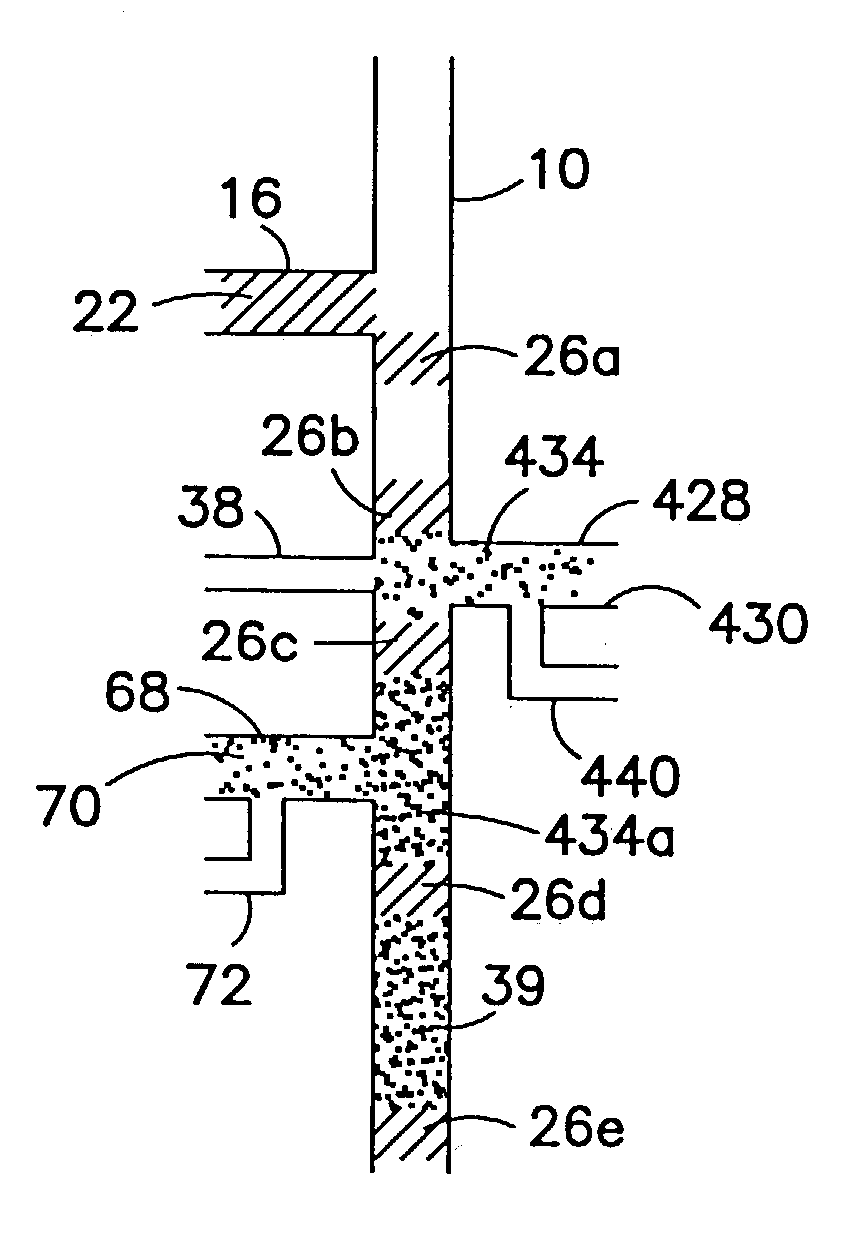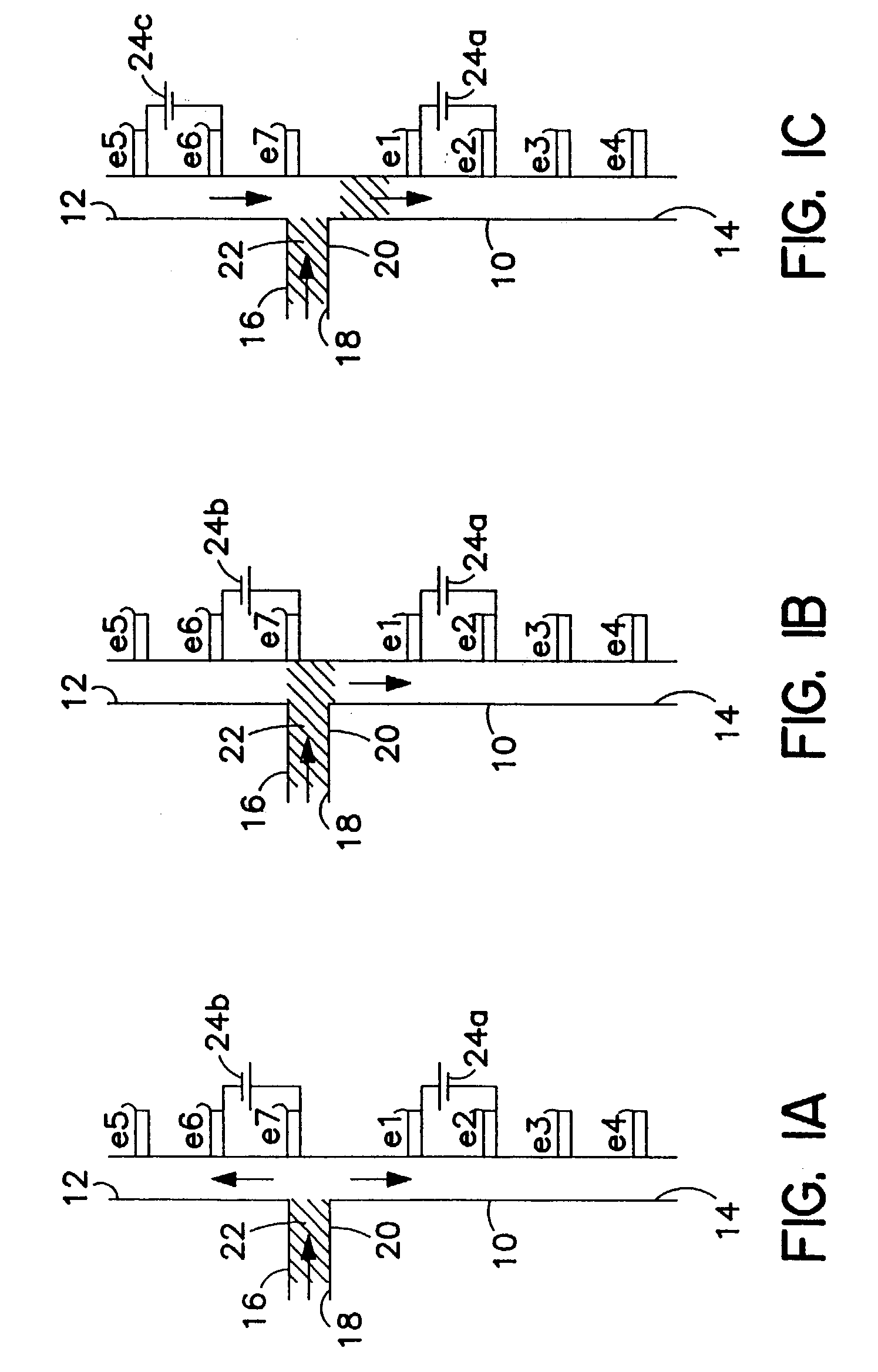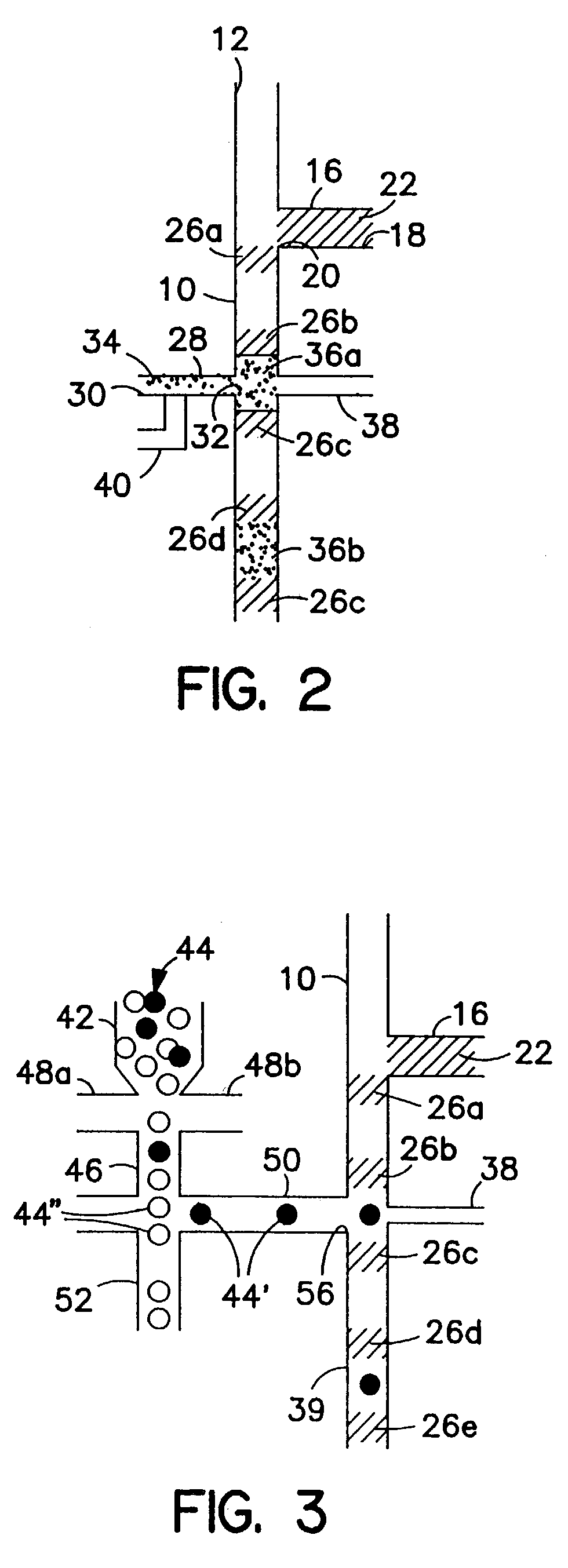Microfluidic devices for the controlled manipulation of small volumes
a microfluidic device and fluidic technology, applied in the direction of flow mixers, electrocardiograms, diaphragms, etc., can solve the problems of not being sufficiently developed, not exploiting the new experimental approaches of known devices, and being less convenient to implement in general
- Summary
- Abstract
- Description
- Claims
- Application Information
AI Technical Summary
Benefits of technology
Problems solved by technology
Method used
Image
Examples
Embodiment Construction
[0024]Referring now to the drawings, wherein like reference numerals refer to the same or similar components or features, and in particular to FIGS. 1A, 1B, and 1C, there is shown a main microchannel 10. Main microchannel 10 is substantially linear and has an inlet 12 that is connected to a source of transport fluid (not shown) and an outlet 14 that is connected to a waste reservoir (not shown). A branch channel 16 has an inlet 18 and an outlet 20 that intersects with the main microchannel 10 for conducting a segmenting or isolating fluid 22 into the main channel 10. Electrodes e1, e2, e3, and e4 are disposed at spaced apart locations along main microchannel 10 between outlet 20 and outlet 14. Electrodes e5, e6, and e7 are disposed at spaced apart location along the side of main microchannel between outlet 20 an inlet 12. All electrodes are in contact with fluids contained within the microchannels. Either the transport fluid, the segmenting fluid, or both are transportable through t...
PUM
| Property | Measurement | Unit |
|---|---|---|
| Force | aaaaa | aaaaa |
| Pressure | aaaaa | aaaaa |
| Polarity | aaaaa | aaaaa |
Abstract
Description
Claims
Application Information
 Login to View More
Login to View More - R&D
- Intellectual Property
- Life Sciences
- Materials
- Tech Scout
- Unparalleled Data Quality
- Higher Quality Content
- 60% Fewer Hallucinations
Browse by: Latest US Patents, China's latest patents, Technical Efficacy Thesaurus, Application Domain, Technology Topic, Popular Technical Reports.
© 2025 PatSnap. All rights reserved.Legal|Privacy policy|Modern Slavery Act Transparency Statement|Sitemap|About US| Contact US: help@patsnap.com



